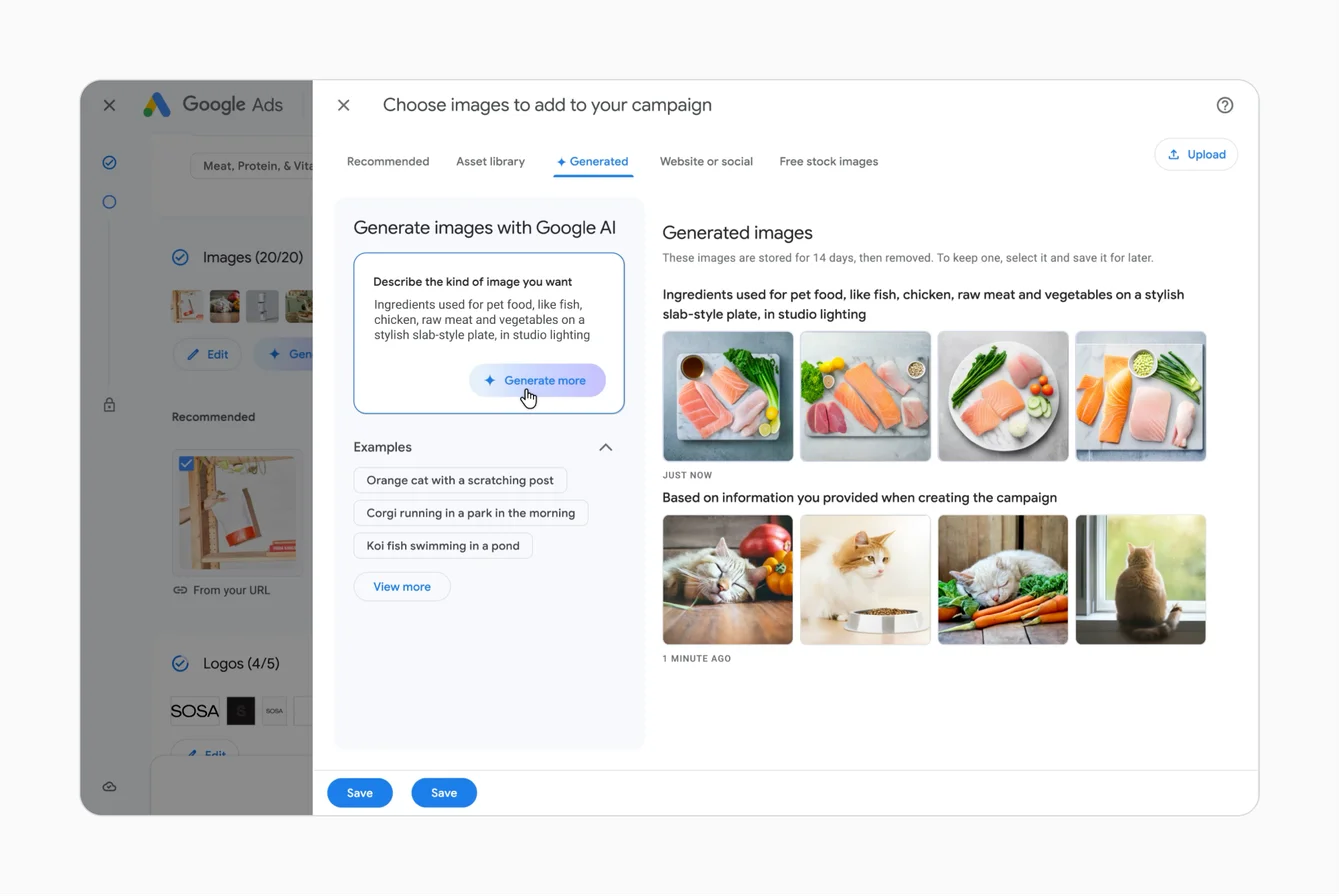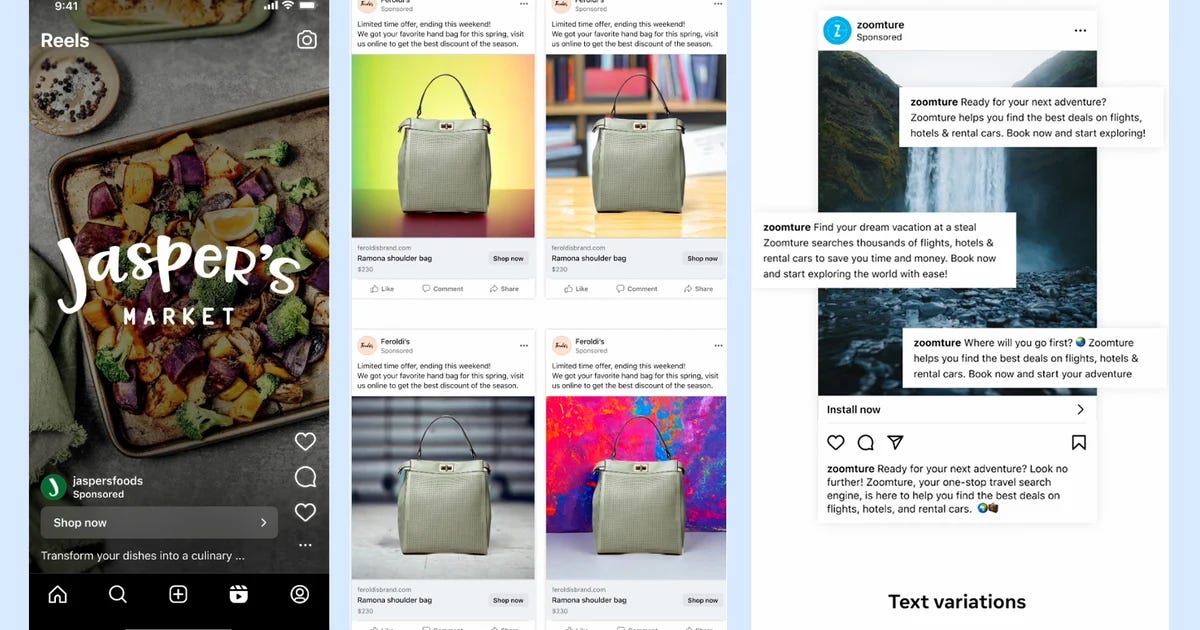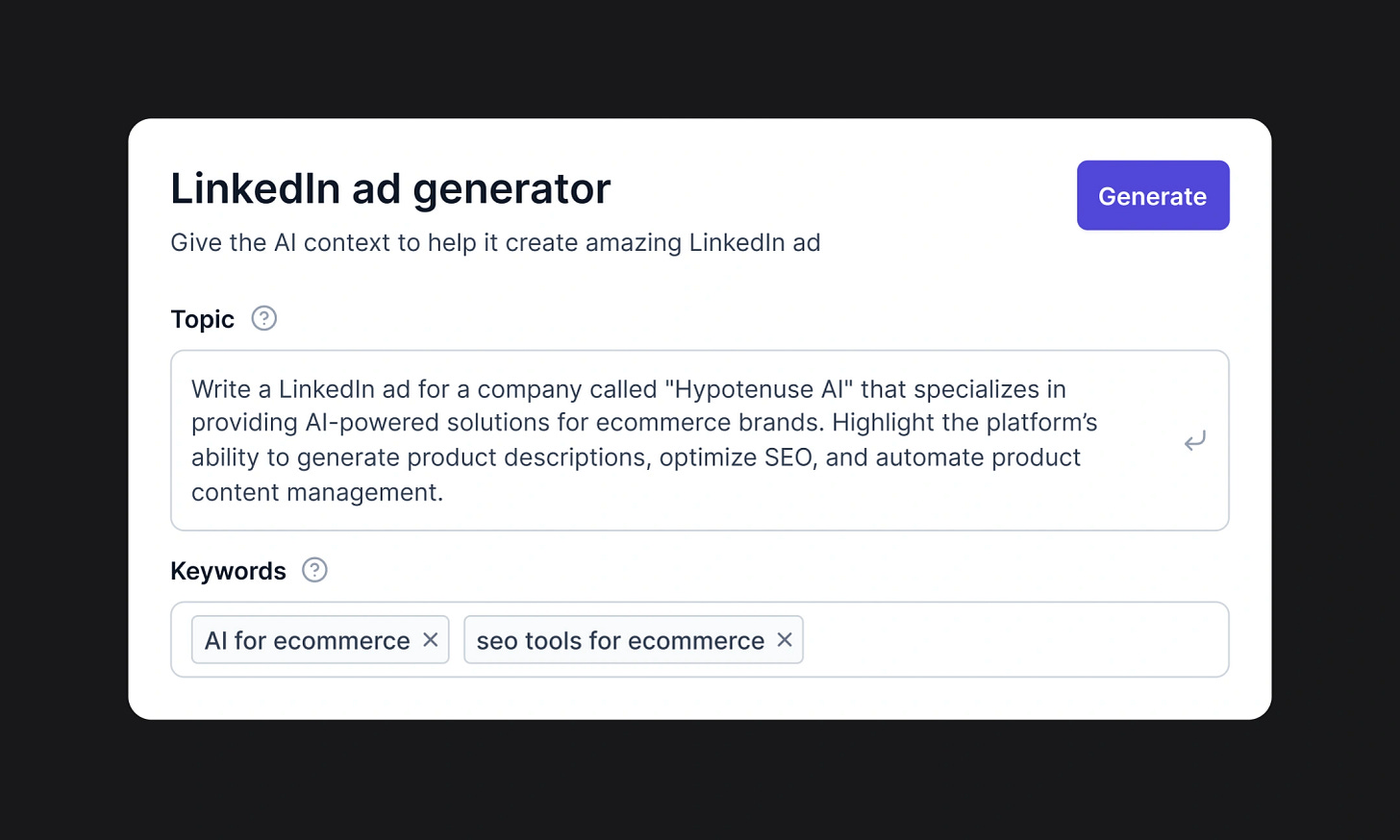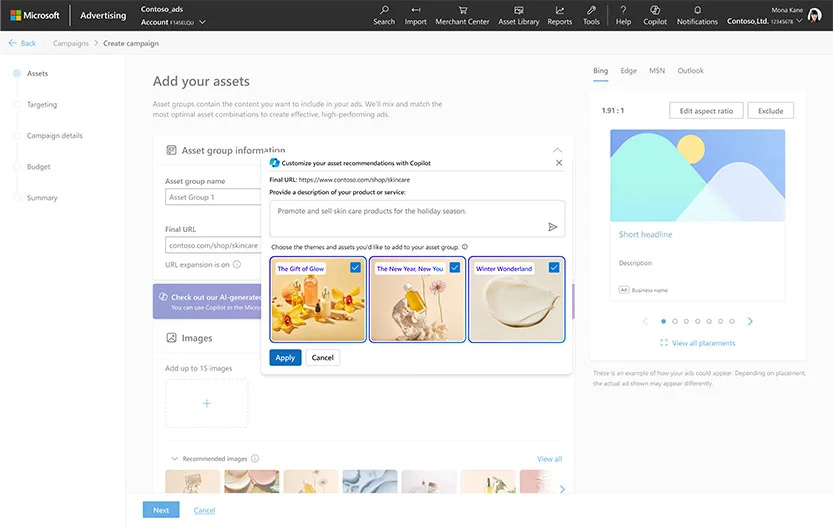AI in Marketing Platforms – 2025 Cheat Sheet
Discover how Google, Meta, TikTok & more use AI to automate ads, boost ROI & reshape marketing in 2025.
Artificial Intelligence (AI) is no longer an experimental layer in advertising—it is the engine behind the most powerful digital advertising platforms in 2025. From Google to TikTok, the world's biggest tech companies are embedding AI into every stage of campaign creation, targeting, creative generation, and budget optimization. This report highlights how major platforms are leveraging AI to streamline ad operations, personalize user experiences, and drive stronger results.
This article aims to help executives, marketers, and curious observers stay informed about the latest AI-driven advertising capabilities. Some features may be in beta or limited to specific regions, but the direction is clear: automation is accelerating, and the role of human marketers is evolving toward more strategic oversight.
Google Ads
Google Ads has undergone a major transformation in recent years, culminating in the full rollout of its flagship AI-driven campaign type: Performance Max (PMax). PMax consolidates ad delivery across all Google properties—Search, Display, YouTube, Gmail, Discover, and more—into a single campaign, managed largely by Google’s AI. The advertiser inputs campaign goals, creative assets, and audience signals, while the AI handles the rest: targeting, bidding, creative mixing, and real-time optimization.
AI-powered targeting in Google Ads leverages user intent signals and behavioral data to reach high-value prospects, even expanding beyond manually defined audiences. Smart Bidding, a core component, uses machine learning to adjust bids per auction based on device, location, time of day, and conversion likelihood. Advertisers simply set targets like a desired CPA or ROAS, and the AI ensures efficient delivery across millions of micro-moments.
One of the most impactful advancements is Google's use of generative AI to create ad assets. Advertisers can prompt the system with a product URL or brief and receive AI-generated headlines, descriptions, images, or videos, customized to brand style and optimized for performance. These are then personalized through Responsive Search Ads, which automatically combine variations based on performance data.
Performance Max also introduces cross-channel optimization, where Google’s AI allocates budget dynamically across its networks based on user behavior and campaign performance. For example, it may determine that YouTube video ads yield better results for a particular audience and shift spend accordingly. Attribution is equally advanced, using data-driven models to estimate the impact of each ad touchpoint and fill in conversion gaps caused by privacy limitations, such as iOS tracking restrictions. In practice, businesses leveraging PMax often experience increased conversion volume and more efficient spending.
Meta Ads (Facebook/Instagram)
Meta’s advertising ecosystem—spanning Facebook, Instagram, and the Audience Network—has doubled down on AI through its Meta Advantage+ suite. Advantage+ automates nearly every aspect of campaign management: from audience targeting and creative testing to budget distribution and bidding strategies. Meta’s goal is to simplify the advertiser experience while increasing return on ad spend.
Advantage+ campaigns analyze Meta’s vast trove of behavioral data to identify likely converters without requiring manual audience selection. The AI tests combinations of segments and creatives, homing in on what performs best. In this model, advertisers provide minimal input and let the system handle the complexity. Meta reported that its AI-enhanced campaigns outperformed manual ones by reducing cost per acquisition and increasing conversions significantly.
The creative side has also seen massive AI infusion. Meta introduced generative tools that help advertisers produce background imagery, multiple copy versions, and even localized translations automatically. Over one million advertisers have adopted these tools, with Meta reporting higher engagement and conversion rates. Advantage+ Creative can also make enhancements to images and videos—adjusting brightness, layout, and even aspect ratio to suit different placements like Stories or Reels.
On the measurement front, Meta’s AI fills in the gaps left by tracking limitations with conversion modeling. These models estimate true campaign impact using probabilistic data and machine learning. Combined with lift studies and data-driven attribution, they offer a clearer view of ROI, particularly in a multi-channel environment. Meta’s strategy is to make AI both accessible and invisible, helping advertisers achieve more with less manual effort.
LinkedIn Ads
LinkedIn’s B2B advertising capabilities have been elevated with the introduction of Accelerate Campaigns, a powerful AI-driven tool that automates the entire campaign setup and management process. Advertisers can now launch a campaign in minutes by simply providing a LinkedIn Page or website. The AI analyzes the input, reviews past performance, and recommends audience segments, creatives, and budget allocations.
Targeting on LinkedIn has always been centered on professional attributes, and now AI enhances this through Predictive Audiences and Predictive Company Targeting. The former identifies individuals likely to engage based on intent signals, while the latter identifies companies demonstrating purchase readiness—ideal for account-based marketing strategies. These features help advertisers go beyond job title targeting and uncover demand where it previously wasn’t visible.
LinkedIn also launched an AI Copy Generator that produces ad headlines and descriptions tailored to industry tone and campaign goals. It supports multilingual output, allowing for seamless localization. The platform’s AI dynamically optimizes ad delivery across segments and formats, rotating creatives based on what performs best for each objective. Dynamic Ads further personalize experiences by inserting profile information, like name or company, into the ad.
Performance metrics show strong results. Microsoft reported up to 42% lower cost per action with Accelerate, and brands like Calendly experienced 3x more lead form submissions versus traditional setups. LinkedIn’s use of conversational AI to answer marketer questions—e.g., “Where should I increase budget?”—reflects a shift toward AI as a co-pilot, not just a backend optimizer.
TikTok Ads
TikTok has rapidly become one of the most sophisticated ad platforms thanks to its deep integration of AI via its Symphony engine. Its Smart+ suite is designed for full automation: advertisers provide creative assets and campaign goals, and the AI manages targeting, bidding, creative selection, and optimization end to end.
TikTok’s recommendation system—already world-renowned for its organic content feed—powers its ad delivery engine as well. Smart+ campaigns use this behavioral graph to deliver ads to users based on their content consumption patterns. For example, if a user watches fitness videos, they’re likely to be shown related product ads even without explicit targeting. The platform can also analyze video content and match it with users who engaged with similar formats or themes.
Creative optimization is deeply embedded. TikTok offers tools to automatically edit videos, highlight top-performing scenes, or generate new content from still images and prompts. Its Script Generator tool drafts compelling ad narratives based on brand input. TikTok also supports AI-generated product showcases through Catalog Ads, where users see personalized product recommendations in real time.
Measurement is another strong point. TikTok’s Conversion Lift Studies, powered by AI, compare control and exposed audiences to estimate incremental conversions. It also introduced GMV Optimization for merchants on TikTok Shop—AI prioritizes product promotion based on likely revenue outcomes, not just click volume. Case studies from brands like Ray-Ban illustrate impressive results, with major improvements in cost per acquisition and conversion rates through Smart+ automation.
Microsoft Ads (Bing + Audience Network)
Microsoft Advertising has embraced generative AI across its ecosystem, making campaign creation and optimization conversational and accessible through its Copilot for Advertising. This tool allows advertisers to describe their goals in natural language—such as promoting a new shoe line—and receive a full campaign structure, including keywords, suggested creatives, and targeting strategy. The system integrates Microsoft’s unique access to LinkedIn data for enhanced B2B targeting.
Creative generation is a major focus. Advertisers can input a website URL and Microsoft’s AI will automatically pull brand assets to generate video ads or display content, minimizing design overhead. These generative capabilities are embedded in the ad interface, allowing quick edits and iterations. Copilot also recommends ad copy variations, headlines, and slogans based on performance data.
Microsoft has transformed from a search-only platform into a multichannel network spanning Bing, MSN, Outlook, CTV, and retail media. AI governs this multichannel optimization, allocating budget to channels that yield the best results. For example, if MSN native ads outperform search for a particular product, the system reallocates spend automatically.
Its AI also powers predictive audience expansion, responsive search ads, and contextual delivery across its Audience Network. Measurement tools offer plain-English performance summaries—e.g., “Your conversions dipped due to a spike in CPC”—making insights more accessible. Businesses using Copilot report faster setup times and better targeting precision, especially for small teams lacking in-house expertise.
Pinterest Ads
Pinterest, traditionally known for top-of-funnel inspiration, has invested heavily in AI to drive full-funnel performance. Its Performance+ suite introduces end-to-end automation where advertisers select an objective—such as catalog sales or website conversions—and Pinterest’s AI optimizes audience targeting, bids, creative enhancements, and budget allocation.
Pinterest’s unique edge lies in its “taste graph,” a deep AI model that captures users’ visual preferences and intent. If someone frequently saves content related to modern kitchens, the AI knows to show them ads for home decor and related appliances. Performance+ campaigns cut campaign setup time by 50% and reduced the need for manual inputs, allowing brands to launch more quickly.
Creative AI is particularly impactful. Pinterest offers generative background tools that turn plain product photos into lifestyle imagery. For example, a photo of a lamp can be transformed into a cozy living room setting. This allows Shopping Ads to blend more naturally with organic pins. Early adopters like Walgreens and Prada reported significant lifts in CTR and ROAS by using these tools.
The AI also supports automated keyword suggestions, trend insights, and personalized discount offerings to increase conversions. For instance, Pinterest may deliver a tailored coupon to a user who previously saved a specific product. Combined with real-time bidding and programmatic integrations, Pinterest has shifted from an inspiration engine to a serious performance marketing contender.
X Ads (formerly Twitter)
Under new ownership, X (formerly Twitter) has launched several AI-powered tools to rebuild its advertising platform. Its key innovation is Grok—an in-house large language model that powers ad creation and campaign analytics. Grok allows advertisers to auto-generate ads from a URL. It extracts copy, selects visuals, writes captions, and produces a complete ad draft that aligns with the platform’s native tone.
The Analyze with Grok feature provides AI-driven performance insights in plain language. For example, it might suggest that a certain demographic is responding better to a campaign and recommend budget reallocation or creative adjustments. These insights are designed to make optimization accessible to advertisers of all skill levels, especially small businesses.
X also uses AI for targeting expansion via its Optimized Audiences feature. This system looks beyond defined parameters to find similar user profiles based on behavior and interests. Combined with an ML-driven ad ranking system that determines which ads to show and when, this helps ensure high ad relevance.
In terms of creative testing, advertisers can quickly try multiple Grok-generated ad variants, allowing for rapid iteration. The platform has also expressed interest in expanding into voice and video ad formats using generative AI. While still in a rebuilding phase, early results indicate that small businesses are finding value in X’s streamlined, AI-assisted workflows.
Snapchat Ads
Snapchat’s advertising strategy in 2025 builds heavily on its dual strengths in AI and AR (augmented reality). Its AI is used across campaign optimization, creative tools, and ad personalization. Snap’s My AI chatbot, which has handled over 10 billion messages from users, serves as both a user-facing product and a source of first-party data to improve ad targeting.
Goal-based bidding, powered by machine learning, enables campaigns to optimize for outcomes like swipe-ups, app installs, and purchases. Snap’s AI models have shown dramatic improvements—Lead Generation ads, for example, saw a 69% drop in cost per lead and 62% increase in submission rate following optimization enhancements.
Creative innovation is where Snapchat truly shines. Using its Lens Studio, brands can describe the kind of AR experience they want (e.g., “flying dragon filter”), and Snap’s AI tools prototype it instantly. AI-powered animation and 3D asset generation streamline creation of interactive ads. Additionally, Snap introduced a GenAI Copy Generator to localize and optimize text content in multiple languages.
Snap’s personalization engine also decides which ad is shown to whom and when. For instance, if someone chats with My AI about gift ideas, they might later be shown related product ads. This intent-driven targeting is an elegant solution to signal loss in a privacy-first world.
Measurement is powered by AI-based incrementality studies and attention metrics derived from engagement and eye-tracking data. A recent campaign combining video and AR Lens showed 1.6× higher ad awareness and 4.4× ROAS. These outcomes highlight how AI can drive both brand engagement and performance on a platform that blends entertainment with utility.
Cheat Sheet: 2025 AI Features in Ad Platforms
Cheat Sheet: 2025 AI Features in Ad Platforms - Free Download
Final Words
The future of advertising is unmistakably AI-first. Campaign creation is rapidly moving toward a model where an advertiser provides a business goal and a URL, and the AI does the rest—designing, targeting, optimizing, and scaling campaigns across platforms. This evolution is already visible across all major players, with tools like Google’s Performance Max, Meta’s Advantage+, Microsoft’s Copilot, and TikTok’s Smart+ leading the way.
These systems don’t just assist—they often take full control of the campaign mechanics, automatically determining where and how ads should appear, what creatives perform best, and how budgets should be allocated. As human inputs become less tactical, the strategic layer of marketing becomes more important than ever.
Marketers are shifting from campaign operators to strategic planners, responsible for defining creative direction, brand tone, and long-term goals. The AI manages the mechanics; the human defines the mission. While targeting options and reporting dashboards may become simpler on the surface, they are powered by increasingly complex AI underneath, requiring marketers to trust the process—but also question, interpret, and steer it effectively.
Ultimately, the best results will come from a hybrid approach: machines handling the execution at scale, and people applying judgment, ethics, creativity, and context. AI may automate delivery, but human marketers will remain irreplaceable in crafting compelling stories and strategic decisions.













